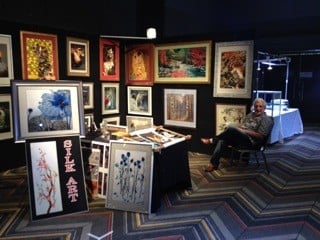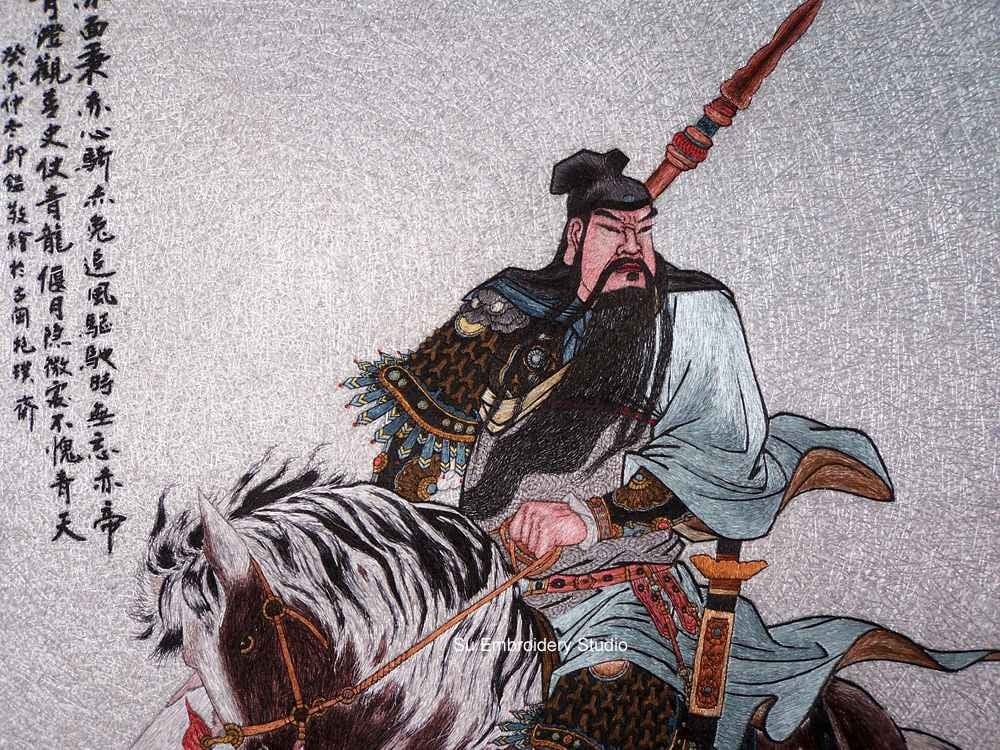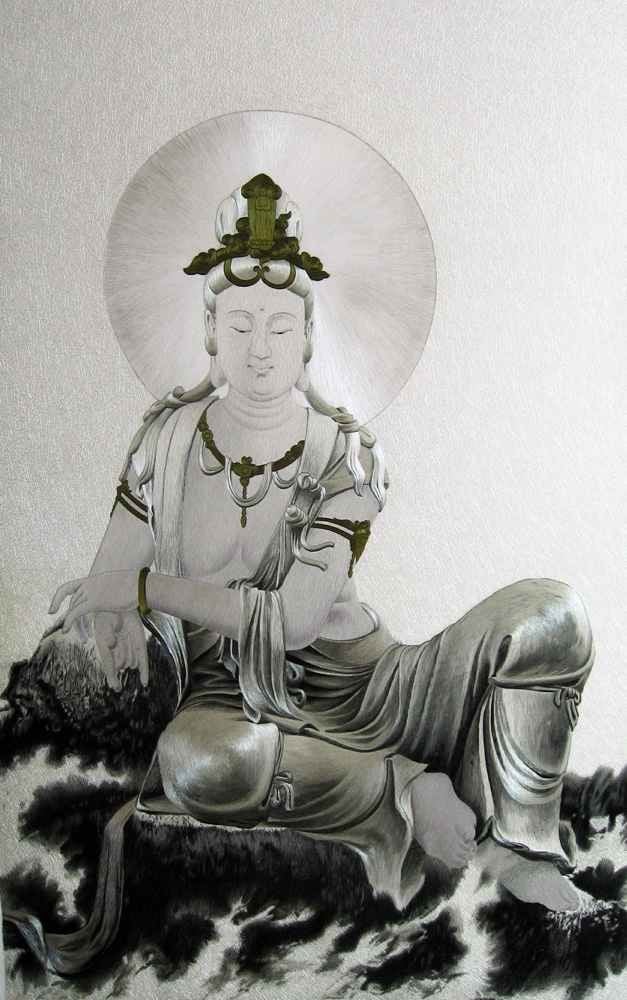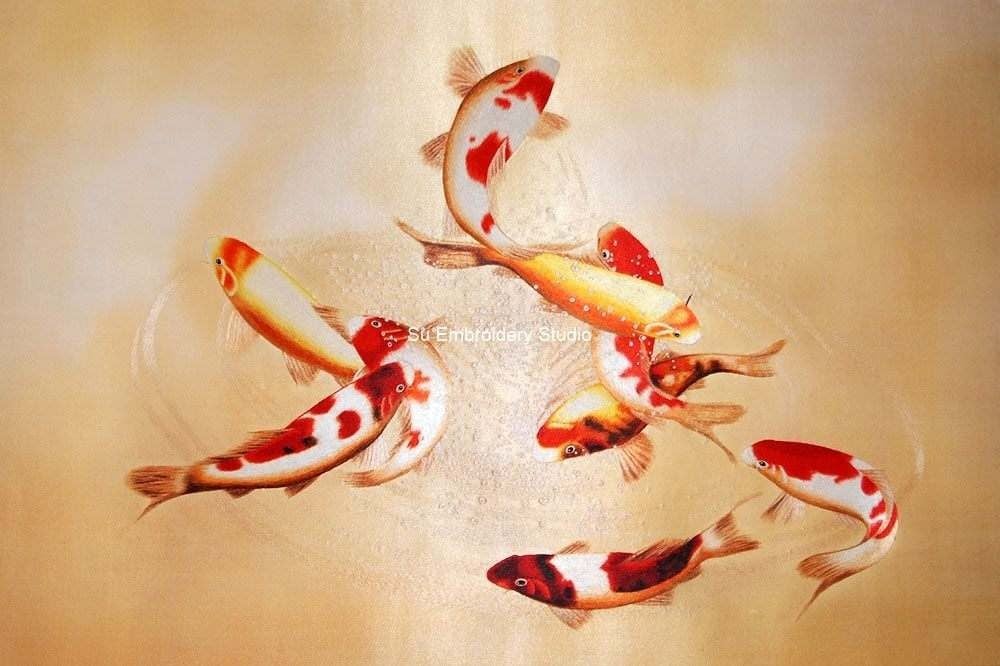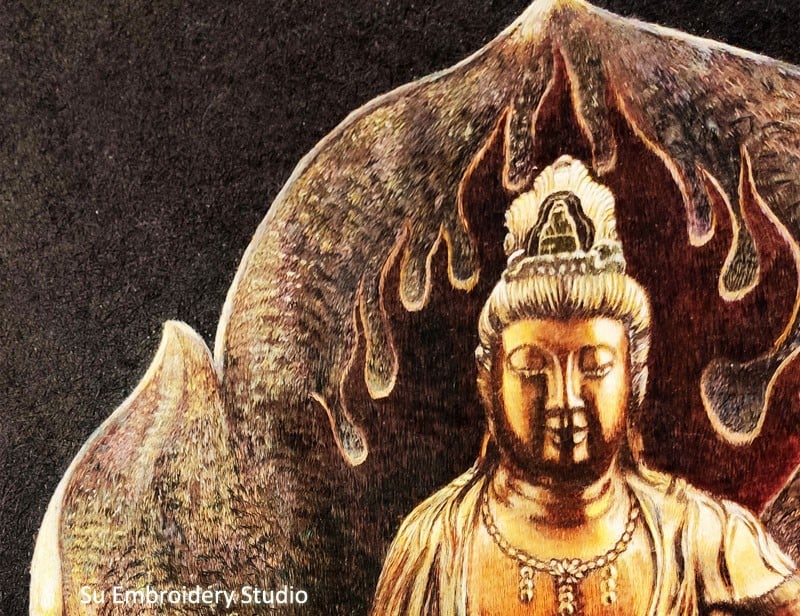
By Raymond, a silk embroidery lover in California, US
In a world filled with art forms celebrated and cherished, there exists an enigmatic treasure that often remains concealed from the uninitiated. "Silk embroidery" - an ancient Chinese artistry - has long dwelled in obscurity in the West, its intricate beauty and unparalleled craftsmanship hidden in plain sight. In this article, we embark on a journey of discovery, shedding light on this "Hidden Oriental Jewel" and unveiling the secrets that make it a masterpiece of human creativity.
Understanding Silk Embroidery
Silk embroidery, a captivating Oriental wall art, arises from the ancient Chinese practice of delicately pulling fine strands of colored silk through a canvas to craft stunning works of art. These meticulously crafted pieces, often framed and hung on walls, serve as ideal gifts, collectibles, home décor, souvenirs, or office adornments. The roots of silk embroidery trace back over 2,000 years in China, flourishing during the Qing and Han dynasties and traveling along the fabled Silk Road.
China stands as one of the pioneers in elevating embroidery to an art form of unmatched sophistication. Specialized embroidery techniques and styles distinguish Chinese embroidery from its global counterparts. In bygone eras, embroidery was an essential skill for every woman, and those who excelled in this art garnered admiration and respect. While women from affluent families embraced embroidery as a hobby, those from less privileged backgrounds turned it into a livelihood. Today, high-quality embroidery stands shoulder to shoulder with the finest Chinese paintings and Tang/Song Dynasty poems.
Buy Chinese Silk Embroidery Online
Appreciating Silk Embroidery
Whether you are an avid art lover or an appreciative novice, delving into the world of silk embroidery will deepen your appreciation for this extraordinary art form. To create a high-quality piece, an artist must meticulously split a single silk thread into several thinner strands, ranging from 12 to 48, depending on the desired finesse. The artist then undertakes a painstaking journey, layering threads of myriad colors to achieve the final, awe-inspiring effect. The intensity of the work necessitates frequent breaks, every 10 to 15 minutes, to rest the embroiderer's eyes.
Given the labor-intensive nature of this craft, larger and more intricate pieces may take an artist, or a group of artists, a year or more to complete. These masterpieces command prices in the thousands, a testament to the unparalleled skill and dedication behind each piece. Yet, smaller, equally high-quality works are also available at more accessible price points.
The Four Styles of Silk Embroidery
Throughout history, diverse needling methods have given rise to four distinct embroidery styles in China:
"Su" Embroidery of Jiangsu Province: Known for its delicacy and elegance, Su embroidery is characterized by its simplicity, often emphasizing a central theme. The stitches are smooth, dense, thin, neat, delicate, and harmonious. The embroidery employs thread so fine that it can be divided into up to 48 strands, invisible to the naked eye. Su embroidery even pioneered double-sided embroidery. In 1915, Su embroidery products graced the Panama World Fair.
"Xiang" Embroidery of Hunan Province: Originating in the Qing Dynasty around Changsha, Xiang embroidery draws from Hunan's folk traditions while incorporating influences from Su and Yue embroidery. The technique uses loose, colorful threads to create designs with less precision, resulting in a gradual, rich color change and harmonious tone. Common motifs include traditional Chinese landscapes, human figures, flowers, birds, and animals.
"Yue" Embroidery of Guangdong Province: Revered for its rich, intricate content, Yue embroidery features vibrant colors and strong decorative effects. The embroidery is smooth and even, often employing gold and silver cushion techniques for a three-dimensional effect. Designs typically include birds worshipping the sun, dragons, and phoenixes.
"Shu" Embroidery of Sichuan Province: Predominantly found in Chengdu, Shu embroidery is crafted from soft satins and colored threads. Local techniques create unique styles, featuring designs such as flowers, birds, landscapes, fish, insects, and human figures. Products range from quilt covers and pillow covers to scarves and handkerchiefs.
Western-style silk embroidery showcases the ingenuity of artists who use fine silk strands and needles to meticulously recreate renowned Western oil paintings, including works by Van Gogh and Da Vinci. This artistry involves painting with silk threads instead of oil, a skill requiring unparalleled precision and dexterity. Remarkably, from a distance, silk embroidery can closely resemble an oil painting. However, close inspection reveals the vibrant, detailed stitching that breathes life into each piece.
Double-sided silk embroidery stands as a testament to advanced technique, as artists stitch on both sides of a single transparent silk canvas. The result is a design visible on both the front and back, seamlessly concealing stitching joints. Typically, double-sided silk embroidery is mounted on wooden frames, allowing viewers to appreciate the artist's mastery from either side.
Custom Portrait Embroidery from Photo
Mounting and Preservation
Mounting silk embroidery is an art form in itself, with two primary techniques:
Hard Mounting: Suitable for small to medium-sized pieces, it involves affixing the embroidery to a wooden board or frame with protective glass. This technique is relatively straightforward.
Soft Mounting: Ideal for larger pieces, soft mounting is a more intricate process. It entails securing the embroidery to a large sheet of paper with a silk border, resulting in greater value due to its complexity.
Proper preservation is essential for silk embroidery. Protect it from moths, ensure it avoids prolonged exposure to strong light, especially sunlight, and maintain an environment with moderate humidity.
In our journey through the art of silk embroidery, we have unveiled a "Hidden Oriental Jewel" that marries tradition, skill, and creativity. Whether you are an art enthusiast or a newcomer to this world, the value of silk embroidery lies not only in its visual splendor but also in the dedication, craftsmanship, and history it embodies. As you embark on your own exploration of silk embroidery, may you discover the magic concealed within this extraordinary art form.
by Su Embroidery Studio (SES), Suzhou China
SES is dedicated to Chinese Silk Embroidery Art and High-End Custom Embroidery
Find SES's embroidery work at Chinese Silk Embroidery for Sale.










